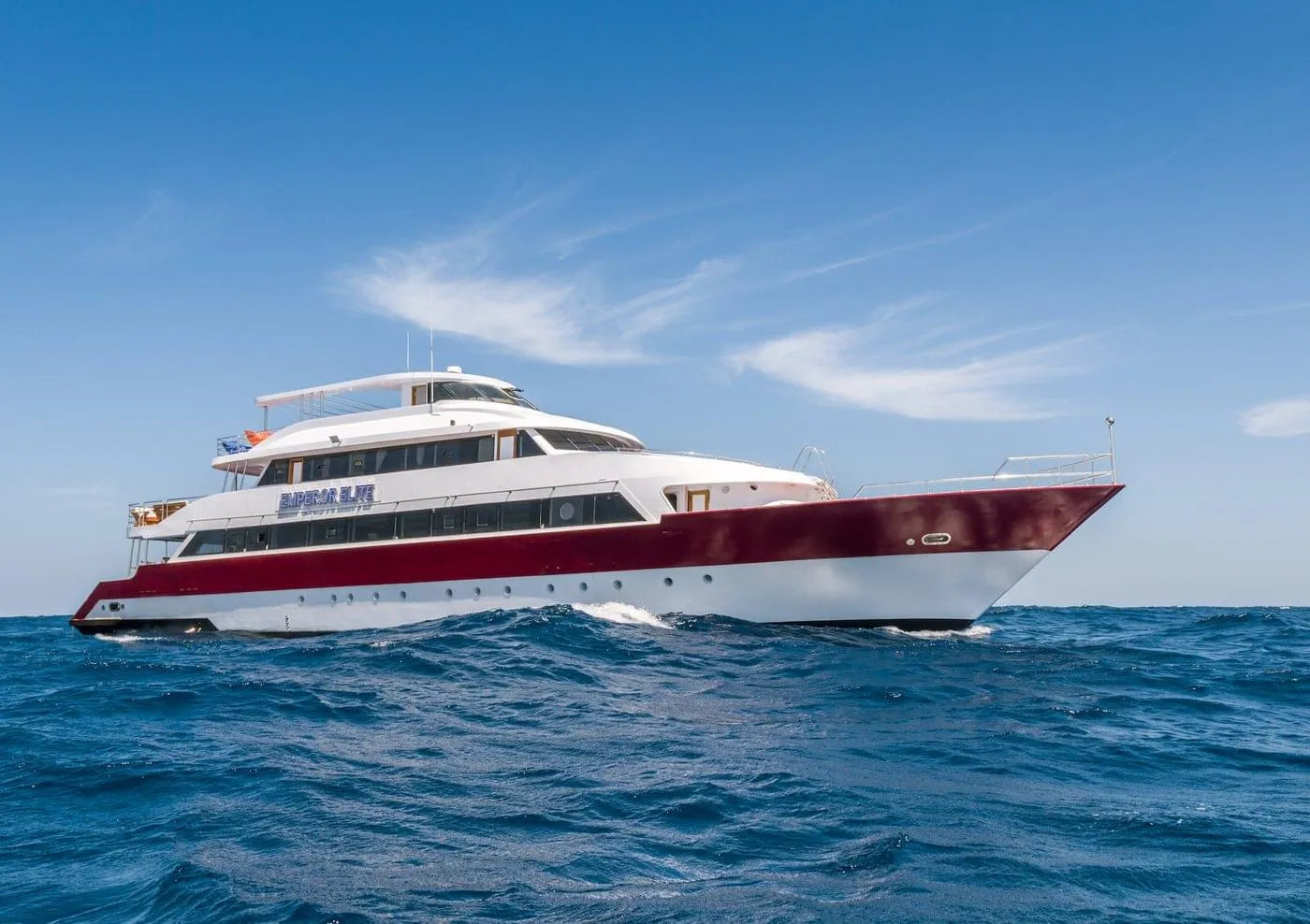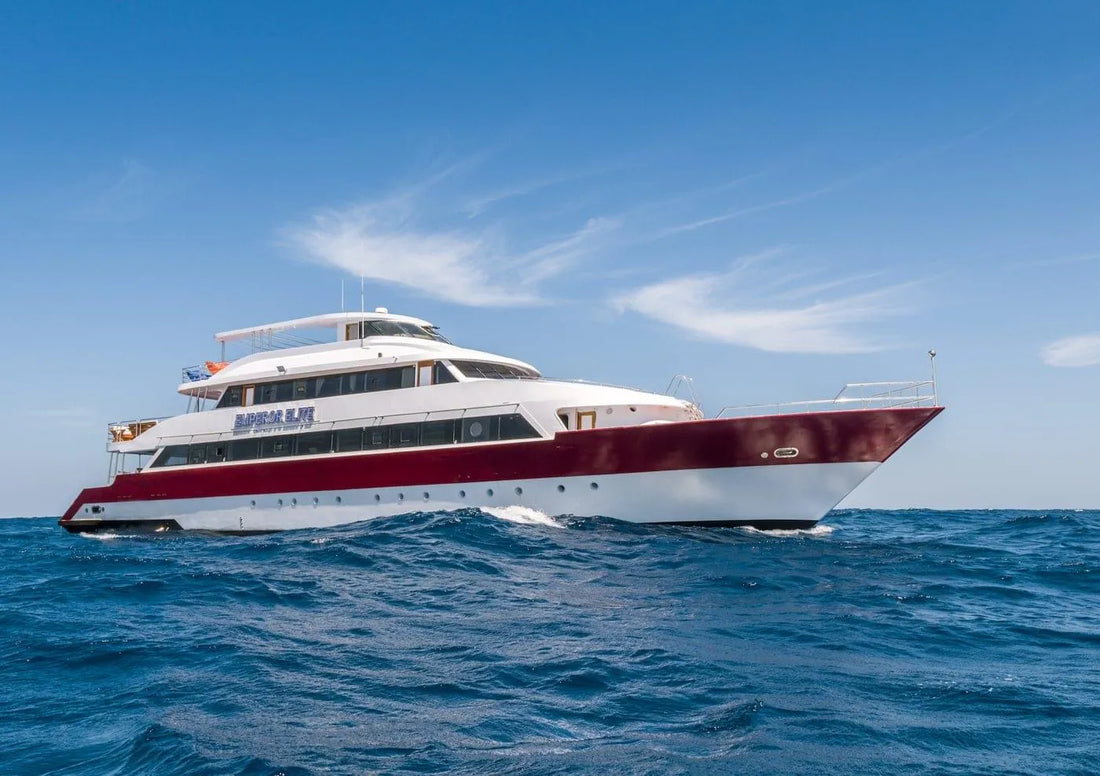

Brothers Daedalus Elphinstone diving trip
If you want to see the wildest predators of the Red Sea, this is your route.
Los mejores liveaboards en ruta Brothers, Daedalus, Elphinstone
Welcome to the pelagic Red Sea
Considered by many divers as the best route in the Egyptian Red Sea for observing pelagics and coral-laden walls, diving at Brothers, Daedalus, and Elphinstone is truly exceptional.
Without a doubt, the Brothers Islands are the highlight of this route. These two islands serve as a sanctuary for thousands of species, and encounters with pelagics are often a common occurrence. Their walls teeming with life, strong currents, and the spectacular variety of fauna are the major attractions of these islands. Not to mention the potential sightings of "longimanus" sharks, hammerheads, and thresher sharks.
By participating in this safari, you will visit Elphinstone Reef, located to the south, whose marine life never fails to astonish even the most experienced divers. All kinds of pelagics frequent the cleaning stations on this reef, where its walls disappear into the depths. You will also dive at Daedalus Reef, the farthest from the coast and amidst frequent currents that enrich this place, famous for "longimanus" sightings. Large schools of hammerhead sharks reside in the vicinity of this reef and often approach for feeding.
Why is the Brothers route one of the most sought after in the Red Sea?
SHARKS
In Brothers, we can dive with some of the most thrilling sharks, such as the oceanic whitetip, silky, hammerhead, thresher, or gray sharks. The Red Sea is the closest place in Europe where we can dive with sharks, and on this route, they are guaranteed.
UNTOUCHED AREA
The remote and challenging location of the Brothers means that you will find yourself in an area with few divers and in excellent conditions, with healthy and virtually untouched corals.
CORALS
This isolation, along with nutrient-rich currents and the great depths of the reefs, allows corals to grow with great vigor, especially the gorgonians, which are enormous in the Brothers, and beautiful black coral forests starting from 30 meters deep.
WRECKS
In the Brothers Route, there are also attractions for wreck diving enthusiasts, with two very interesting wrecks along the itinerary. Both the Aida, sunk between 30 and 60 meters more than 50 years ago and covered in a multitude of corals on its hull, and especially the Numidia with its 110 meters in length, highly regarded by technical divers, are two additional spectacles to add to the shark encounters during the diving trips in the Brothers Daedalus Elphinstone route.
What is a liveaboard diving trip like in the Brothers, Daedalus, Elphinstone route in the Red Sea?
What is the best time of the year for diving in the Brothers route?
For diving on this particular route, it's best to start from September. After the summer heat is when the sharks come closer to the surface, and the best conditions for diving in these islands are present.
However, it's true that you can dive in the Red Sea year-round, with surface temperatures ranging from 18°C in February to 45°C in August. The summer and late spring are intense in Egypt. I still remember my first trip to the Red Sea in late May with 40°C on the deck at 9 in the morning. On the bright side, for those who get cold easily, the water temperature in the summer is excellent, around 25°C. It's common to see divers in late spring and summer wearing a shorty or 3 mm wetsuit, but during the rest of the year, a 7 mm or 5 mm suit will be sufficient unless you are very sensitive to the cold. In winter, the water temperature can drop to 18°C, and with successive dives and heat loss, you may feel cold even with a 5 mm suit.
WHAT CERTIFICATION DO I NEED FOR DIVING IN THE BROTHERS ROUTE?
Unlike the Northern route, the Brothers route requires an Advanced Open Water Diver certification, and some cruises may demand a minimum of 50 logged dives.
